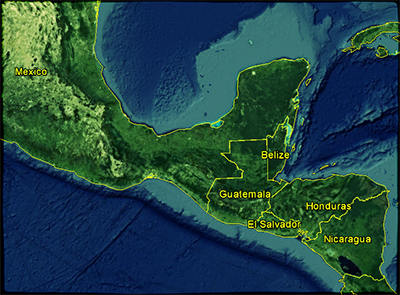One of the easiest ways for the United States to stop the flow of illegal aliens from Central America, kids and adults alike, is to put serious pressure on Mexico to stop letting illegals move through their country.
That is not to say that the U.S. government should not take its own action to stem the surge, but that's a different subject.

U.S.-Mexico trade is important to the United States, but it is absolutely vital to Mexico. Similarly, access to the United States by Mexicans is more important to Mexico than access to Mexico by Americans is to the United States. All the White House needs to do is to slow that trade in goods and people suddenly and dramatically and the Mexican government would quickly start controlling its southern border to keep Central Americans in Central America.
We are a country of laws, and our leadership says that our hands are tied vis-a-vis the young Central Americans arriving claiming rights under a hastily passed 2008 law. Whether that law even applies is another question.
Mexico has laws and it does count the votes, but its executive branch has much broader powers than does ours, and most of the problems caused by the influx of Central Americans into South Texas can be handled quickly and fairly easily by that government.
There is no need for any agreement with Congress, nor for massive expenditures of U.S. tax dollars. All we need to do is to lean on Mexico to do the right thing.
The problem, of course, is that the Obama administration is loathe to throw our weight around, and is unlikely to regard the crisis at the border as something that we should handle by giving Mexico a hard time. It is also presumably worried about how a little hardball with Mexico would play with Hispanic voters, and with the vocal sliver of our economy that profits from Mexican imports.
What I propose is a series of actions, all negatively impacting Mexican individuals and Mexican business, all of which can be set in motion immediately by the executive and then reversed, perhaps piecemeal, when and if the surge slows and then (one hopes) ends. Our government would announce the whole package, which would be implemented on a pre-announced schedule, with the pressure on Mexico increasing with each passing day. (We might call these actions sanctions, as we do with Iran.)
One such schedule:
Day One: No more visas to come to the United States would be issued except for a limited number of diplomatic ones, say 10 a day. This would include all the H-2A and H-2B temporary worker visas.
Day Two: No new or renewed border-crossing cards would be issued.
Day Three: No existing visas, save diplomatic ones, would be honored at any U.S. port of entry, but those with full border-crossing cards could continue for one more day.
Day Four: On a totally random basis, one-third of would-be users of border-crossing cards would be denied entry. (The randomness formula would not be announced.)
Day Five: On a totally random basis, two-thirds of would-be users of border-crossing cards would be turned away.
Day Six: Again on a random basis, one third of Mexican-owned trucks seeking to enter the United States would be turned away, regardless of how perishable the cargo, and no truck could seek to enter the United States more than once on a given day.
Day Seven: Again on a random basis, two-thirds of Mexican-owned trucks would be turned back at the border. And so on.
Note that no legislative or judicial actions are needed in this scenario, and no additional funds would be needed. Government staff, notably the inspectors at the ports of entry, but also consular officers, would simply give a different set of decisions than they usually do. And at no time would we close our border, just tighten it.
Northbound traffic of U.S. citizens and green card holders would proceed as usual.
What could be simpler and less expensive? The reaction from south of the Rio Grande would, of course, be explosive.
This solution would still leave us with tens of thousands of Central Americans who would need to be processed — a major problem, but a solvable one.
The United States needs to do something dramatic to stop the flow, and these are seven modest suggestions as to how to do that.
As a small sweetener, if Mexico agrees to turn back the Central Americans, we could provide some closely monitored funding for the buses engaged in those returns, or maybe even some funds for their border patrol.
